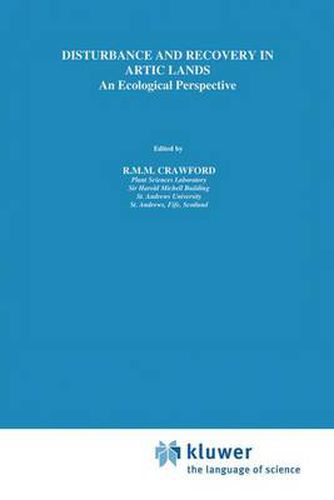Readings Newsletter
Become a Readings Member to make your shopping experience even easier.
Sign in or sign up for free!
You’re not far away from qualifying for FREE standard shipping within Australia
You’ve qualified for FREE standard shipping within Australia
The cart is loading…






This title is printed to order. This book may have been self-published. If so, we cannot guarantee the quality of the content. In the main most books will have gone through the editing process however some may not. We therefore suggest that you be aware of this before ordering this book. If in doubt check either the author or publisher’s details as we are unable to accept any returns unless they are faulty. Please contact us if you have any questions.
The disturbance and recovery of arctic terrestrial ecosystems was the subject of a NATO Advanced Workshop held at the Arctic Centr, University of Lapland, Rovaniemi, Finland, in September 1995. The object of the meeting was to bring together researchers on arctic vegetation who share a concern for the preservation of arctic ecosystems. A particular aim of the meeting was to involve as many Russian colleagues as possible and to encourage younger scientists currently active in the Russian Arctic to come to Rovaniemi and make first-hand contact with colleagues from other countries with a view to planning further collaboration. This volume of papers therefore contains papers both from many younger researchers as well as from those who have been active in arctic plant ecology for many years. Disturbance is no new feature in the arctic environment. The factors that create the arctic habitat include marked climatic oscillations, physical disturbance and fluctuations in herbivore populations. The combination of environmental stress and disturbance from habitat instability and the possibility of periods of intense grazing imposes a particularly testing blend of adverse conditions for plant survival. The physical nature of the terrain with constant soil movement through cryoperturbation and solifluction contributes to the fragility of arctic habitats. To this scenario we must add disturbance by man in the unending quest for yet more natural resources, whether they be animal, vegetable or mineral or merely the concept of environmental experience, as in tourism.
$9.00 standard shipping within Australia
FREE standard shipping within Australia for orders over $100.00
Express & International shipping calculated at checkout
This title is printed to order. This book may have been self-published. If so, we cannot guarantee the quality of the content. In the main most books will have gone through the editing process however some may not. We therefore suggest that you be aware of this before ordering this book. If in doubt check either the author or publisher’s details as we are unable to accept any returns unless they are faulty. Please contact us if you have any questions.
The disturbance and recovery of arctic terrestrial ecosystems was the subject of a NATO Advanced Workshop held at the Arctic Centr, University of Lapland, Rovaniemi, Finland, in September 1995. The object of the meeting was to bring together researchers on arctic vegetation who share a concern for the preservation of arctic ecosystems. A particular aim of the meeting was to involve as many Russian colleagues as possible and to encourage younger scientists currently active in the Russian Arctic to come to Rovaniemi and make first-hand contact with colleagues from other countries with a view to planning further collaboration. This volume of papers therefore contains papers both from many younger researchers as well as from those who have been active in arctic plant ecology for many years. Disturbance is no new feature in the arctic environment. The factors that create the arctic habitat include marked climatic oscillations, physical disturbance and fluctuations in herbivore populations. The combination of environmental stress and disturbance from habitat instability and the possibility of periods of intense grazing imposes a particularly testing blend of adverse conditions for plant survival. The physical nature of the terrain with constant soil movement through cryoperturbation and solifluction contributes to the fragility of arctic habitats. To this scenario we must add disturbance by man in the unending quest for yet more natural resources, whether they be animal, vegetable or mineral or merely the concept of environmental experience, as in tourism.